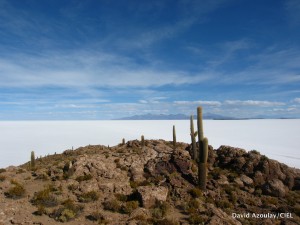
The boundary for the 1,952 mile U.S.-Mexico border was originally delineated in a series of joint surveys carried out following the signing of the Treaty of Guadalupe- Hidalgo. The boundary was lengthened after the Gadsden purchase of Arizona and parts of New Mexico in 1853, and delineated further as late as the 1970.1 A series of boundary markers were placed on the boundary from the Pacific Ocean to El Paso, where the Rio Grande becomes the boundary marker. There were no border stations until 1894, and no border patrol until 1904, when about 75 mounted inspectors were assigned to the U.S. border to apprehend Chinese immigrants. The first immigration act to set up a permanent immigration system based on country of origin, passed in 1924, excluded individuals from Latin America, including Mexico, from the quota system. Barbed wire fence went up randomly along the border, principally the work of private ranchers and to a lesser extent the Bureau of Land Management seeking to keep US and Mexican cattle separated. In a number of places, unofficial but regular crossing points, on land and across the Rio Grande by pedestrian bridge or water transport, were known and permitted by government officials on both sides.
